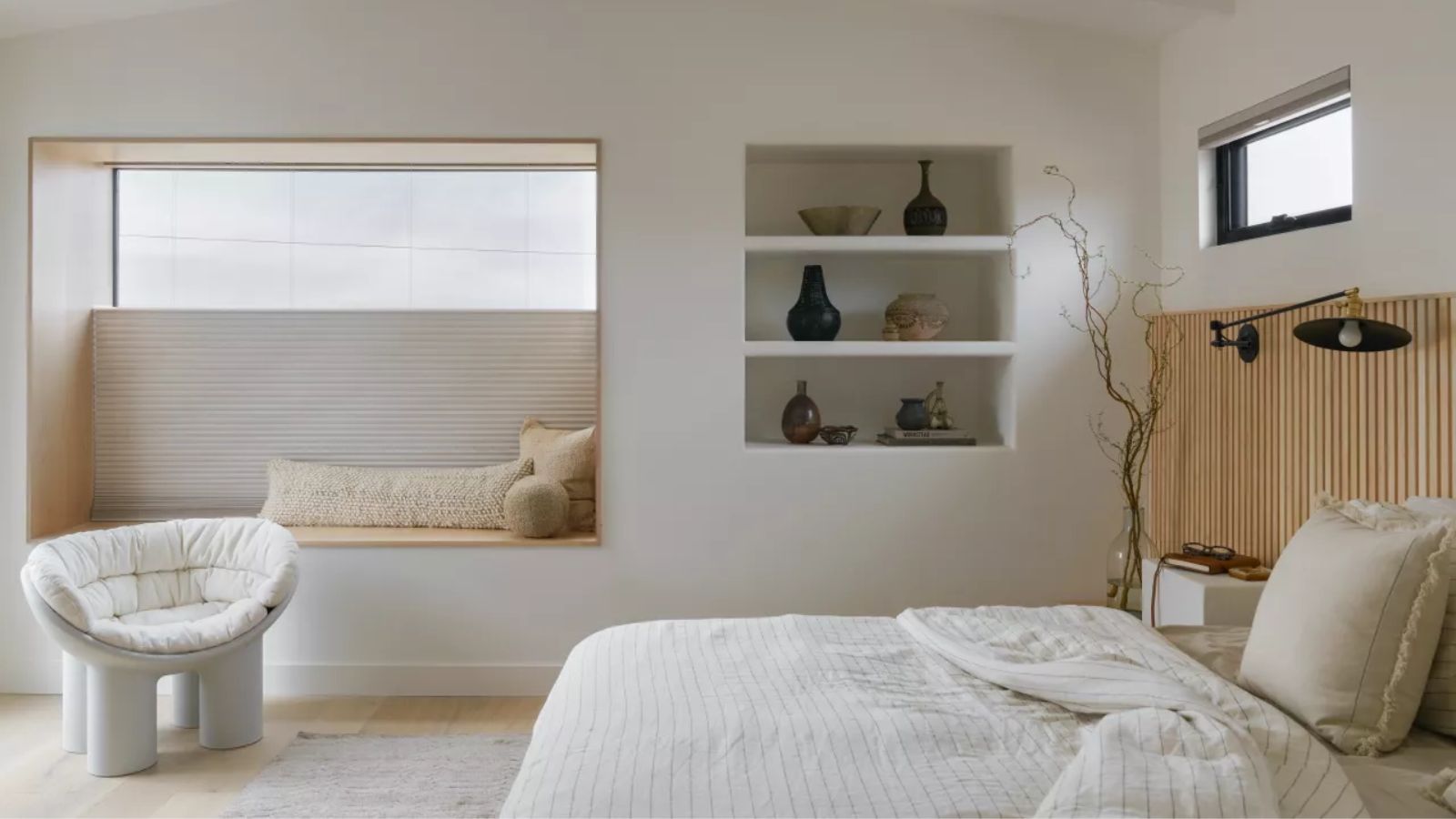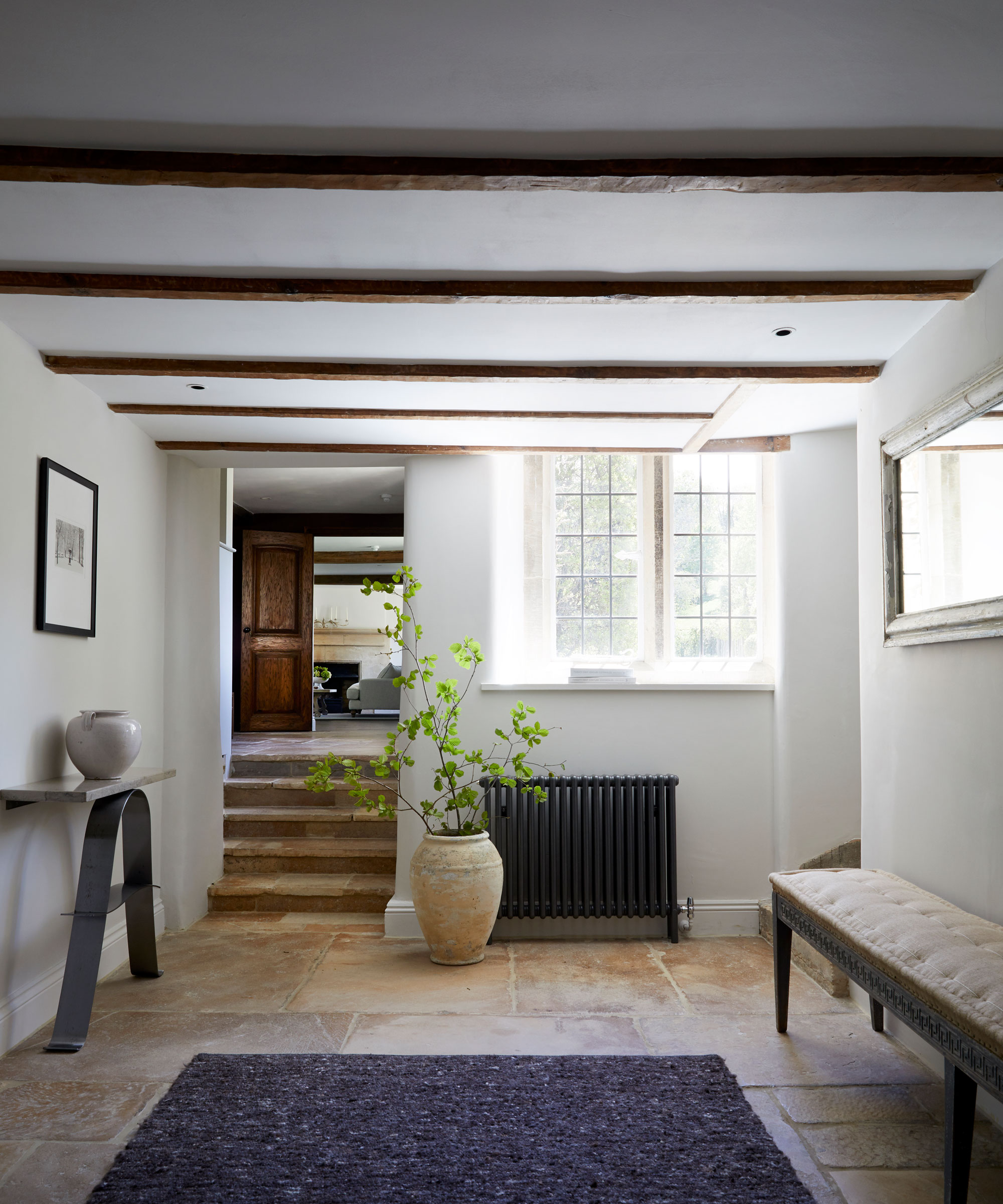
If you have your heating on and still have one frigid room in your home, it can be hard to work out where the issue lies.
Although it can be tempting to close the door and reduce how often you use the space, this can be the enemy of keeping a house warm all day, even resulting in mold and higher energy bills – especially if a broken duct is to blame.
From leaking ducts to faulty windows, these are the reasons one room may be colder than others, and how to fix them.
Why is one room colder than the rest of my house?
Even if you do not use the room very often, it is important to continue to heat the space to make your heating more efficient. Keeping all of your rooms warm will not only ward off mold and condensation but will also prevent cold air from one room from leaking into the rest of your space, making your home cold even with heating.

1. Your air ducts are leaking
If only one room is affected, and you can feel very little heat from your vents at all, then leaking ductwork is likely to blame, begins Amit Gupta, HVAC expert and CEO at Aeroseal:
‘95% of all air ducts leak,’ he shares. ‘How much leakage varies from house to house. Over time, air ducts can deteriorate and develop cracks, holes, or loose connections. The material used in the ducts, such as metal or flexible ductwork, can weaken with age and usage.’
If you suspect leaking ducts are to blame, then it is best to schedule a professional service to help locate and repair any issues and cut energy bills.
2. Your air ducts are not installed properly
Likewise, it may be that your home heating ducts were not installed correctly in the first place, Amit Gupta, HVAC expert, continues.
‘If ductwork is not installed properly, it can lead to gaps or misalignments that allow air to escape,’ he says. ‘Inadequately sealing joints and connections during installation is a common issue that leads to leaks.’ Again, this is an issue best repaired by an HVAC technician.
3. Your room is not insulated
Another structural cause may be a lack of proper insulation in your room. While it is possible to keep a poorly insulated home warm, it is much easier and cost-efficient to find ways to keep the heat in before it seeps outside, reminds David Walter, contractor at Electrician Mentor:
‘To see if this is the issue, just put your hands on the walls in that room and see if they are colder than other walls in other rooms. If they are, that is your problem,’ he recommends.
More often than not, the fix is rather simple,’ he assures. ‘If you have cavity walls, it involves drilling small holes into those walls and applying spray foam insulation. Then you have to fill in the holes with caulk, which is a basic procedure.’
There are other options available if you do not have cavity walls, such as thermal paint or insulation boards.
4. Your window is leaking
Sometimes, warming up a cold room in an otherwise warm house comes down to simple draft-proofing, especially if a cold window is to blame, says Sol Kruk, owner and licensed home inspector at Property Inspection Pros.
Use your hands to check for cold breezes around your windows, checking all around the frame, he recommends. ‘Sometimes our windows can have cracks or drafts that allow a cold breeze to waft inside,’ he explains. ‘For a quick fix, you can repair with weatherproofing tape or window film. If you have the scope, consider replacing the windows entirely if they are old.’
5. Your room is north-facing
If you have ruled out structural issues, then it may be that your room is simply north-facing, Sol Kruk, licensed home inspector, determines. Warming up a north-facing room can be trickier than other spots in your house, but it is not impossible to bring it up to temperature, he says.
‘If one room faces the sun and another doesn't, it can cause one room to feel warmer than the other. For the room that doesn't receive sunlight, you can add a space heater to help it be less cool,’ he suggests.
To keep a north-facing room feeling cozy through winter, you can also bulk the space out with soft furnishings, adding rugs to help warm up underfoot and thermal window treatments and draft excluders to keep warm air in.
FAQs
How do you warm up the coldest room in your house?
When trying to warm up a cold room, it is best to work out why it is colder than the rest of your home first so you are not wasting energy and money trying to heat a space that is leaking. Blocking drafts, fixing ducts, and adding insulation will go a long way to helping keep the heat in.
Why is one room in my home so much hotter than the rest?
If one room is hotter than the rest of your home, then it may be because you have closed-off air vents, allowing all the hot air to escape in one spot only. Opening vents and ensuring they are not blocked around your home is usually the remedy to this. If this doesn't work. Then there may be an issue with your ductwork itself, which will need servicing by an HVAC professional.
If none of these bigger issues are to blame, it may be that your cold room is simply less furnished than the others in your space. Rooms without thick drapes, carpets, or lots of soft furnishings will naturally feel a little colder than those with. Once structural issues are put to rest, consider adding a little more insulation in the way of decor to help buffer against the cold.
!["[T]he First and Fifth Amendments Require ICE to Provide Information About the Whereabouts of a Detained Person"](https://images.inkl.com/s3/publisher/cover/212/reason-cover.png?w=600)






